Euphorbia francoisii Red Flower succulent live plant
₹500.00
Out of stock
Email when stock available
Euphorbia francoisii Red Origin and Habitat: Taolanaro (Fort-Dauphin and Andrahomana near Ranopiso), Southern Madagascar.
Altitude: It grows at low elevation up to 50 metres asl.
Habitat: Euphorbia francoisii has a very small extent of occurrence on the sand dunes near the Vinanibe coast, in the open or beneath low bushes.
Synonyms:
- Euphorbia francoisii Leandri
Description: Euphorbia francoisii is a very variable caudiciform shrublet up to 15 cm tall. Without question, it is one of the most popular Euphorbias in the Euphorbia ambovombensis group with beautiful leaves coming in a dazzling array of shapes and colours that change with the seasons. If the unique leaf coloration and shape from one plant to the next were not enough the individual leaves on a single plant can vary in color and shape. In its natural habitat it is a seashore plant with underground stolons which does not make any stem growth above ground whatever apart from a rosette, flat on the ground. It is allied to such well-known caudex-forming euphorbia species as Euphorbia decaryi, Euphorbia cap-saintmariensis, Euphorbia cylindriflora.
Roots: Tuberose merging with the stem to form a succulent geophytic caudex (rootstock). The tuberous roots are very decorative and in many plants in cultivation are often raised above the soil. In seed raised plants, the caudex tend to be much larger and solitary (or few branched) while in plants which have been raised from cuttings, the tuberose roots tend to be thinner, and are more branched, eventually producing tangled masses of many fat roots.
Branches: Several, beige, rounded, erect, sprawling or procumbent, 5 – 10 cm long, and 5 mm in diameter slowly enlarging at the bases to reach in time the size and form of a small carrot. The branches sprawl and twists gracefully in a random fashion making each plant a unique living sculpture.
Leaves: Evergreen in rosettes at the end of the branches, very variable both as to form, succulence and colour. Blade oblong, lanceolate or spade shaped (occasionally deltoid or even lyre shaped) 2-8 cm long and 0,3-3 cm wide, leathery, glabrous, smooth, and typically flat in cross section, multicoloured, dark-green, pink, purple, white and variegated. The variegation emerges and radiates throughout the leaf as it matures and changes throughout the year. Margin slightly wavy sometimes of a different colour than the rest of the leaf. Stipules cartilaginous, persistent, up to 4 mm, expanded and divided at the base, whitish.
Inflorescence: 1-2-forked cymes at the branches tips among leaves, on peduncles upto 2 cm long. Cyathia 3 mm in diameter enveloped by large yellowish green to pinkish, cyathophylls (coloured bracts) spreading, rounded, up to 7 x 12 mm wide. Nectar glands yellow. Ovary subsessile
Remark: The uniqueness of each francoisii plant’s leaf coloration and branch architecture is is due to the fact that they are hexaploids.
Be the first to review “Euphorbia francoisii Red Flower succulent live plant” Cancel reply
You must be logged in to post a review.




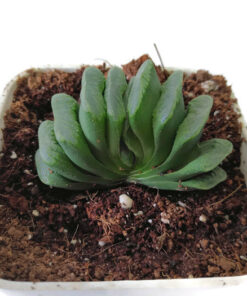

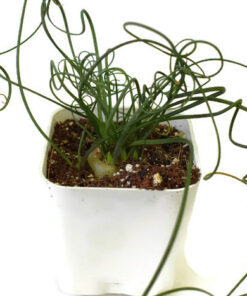

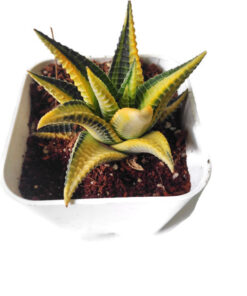
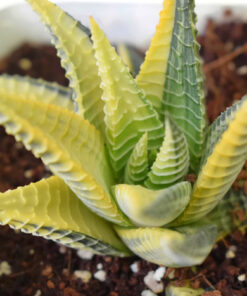
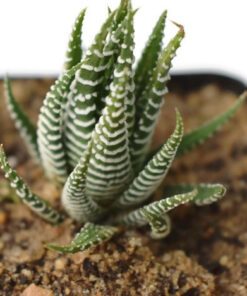
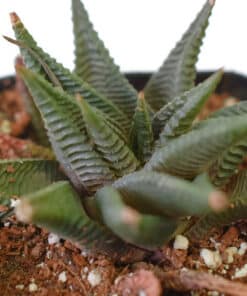

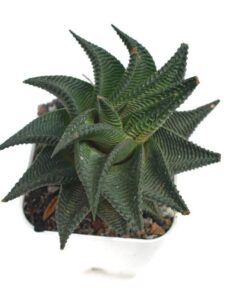
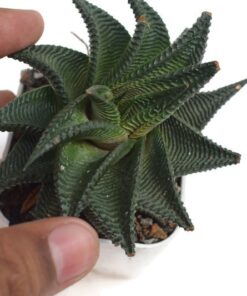
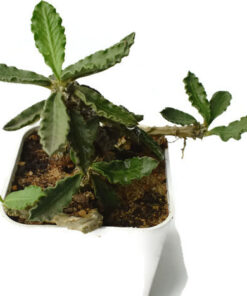



Reviews
There are no reviews yet.